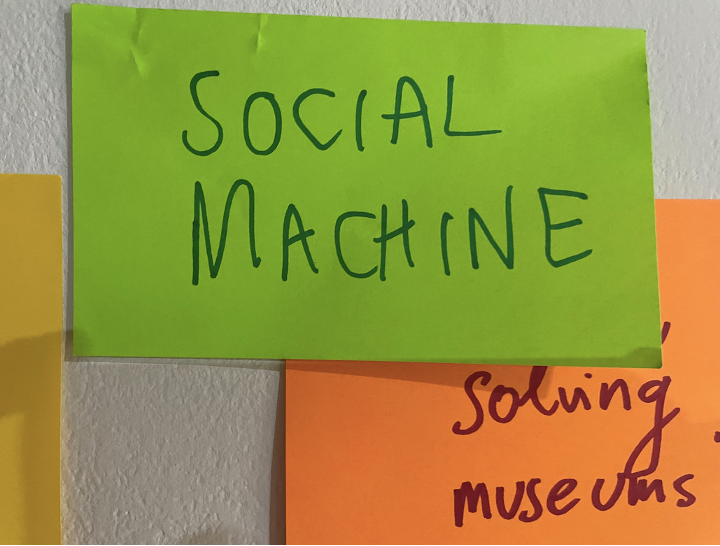Helen Graham and Arran Rees
Congruence Engine is a complex project with many people involved. As a way of organising ourselves we’ve developed a working groups approach designed to enable distributed activity, with people able to initiate and lead and find the right people to work with based on time, energy and interest (not hierarchy).
To facilitate this we thought we could use a shared sense of direction. To express this we drew on the work of Mike Benson, Kathy Cremin and John Lawson which they had collectively developed for Ryedale Folk Museum and Bede’s World and which they wrote up and shared as part of the How should heritage decisions be made? project (in which Tim Boon and Helen were also involved).
Mike, Kathy and John wrote:
If a north star of the mission and principles guide the museum,this will be seen across that museum in the behaviours and conversations. This social museum will pioneer decision-making that turns the triangle of hierarchical decision-making on its head, with a mission and governance informed by users and beneficiaries of the organisation’s work.
Our north star mission nourishes the roots of a social space for heritage, that values the expertise and knowledge of different people and that – like a spinning atom – enables leadership to shift and change according to need. Ours will be a museum where linear hierarchies are redundant. In this model, decisions are made by the right person, at the right time, in the right place.
(How should heritage decisions be made?: Increasing participation from where you are, 2015, p.24)
We set up the intention to develop a North Star at the beginning of the conference and then asked people to contribute vocabulary over the three days. In the final conference session we sought to collectively explore the issues, building together a sentence through generating a variety of possible vocabularies.
This enabled a very fruitful conversation that flushed out some differences as well as some resonant formulations and textures.

One initial issue was whether this North Star was for us or for others; we discussed and came to an agreement that it is for us as a project team. There were differences across the team in emphasis between whether the process was people-/human-centred or whether we wanted to express a more assemblage social-material/social-technical ontology. This probably will need further discussion as we work through the drafts.

We have two versions of our working draft; the first is annotated with questions. It works with the variety of vocabulary generated at the conference and indicates different possible routes for connecting ideas. Then there is a Draft 2 which is ‘best draft’ that tentatively encapsulates on the various aspects.

This blog and the working drafts – both Draft 1 and 2 – will now be shared with all involved for further discussion.
Draft 1
The Congruence Engine is a collaboration [/ongoing dialogue?] between people, data and machines…
which will [experimentally] bring together [de-silo?] multiple archive and museum collections
…in order to identify and unleash the ongoing resonance [significance / meanings?] of industrial heritage [/thinking UK industrial heritage in a global context) – via themes of Textiles, Energy and Communications – for the world we live in today.
Draft 2
The Congruence Engine is a collaboration between people, data and machines
…which will experimentally bring together multiple archive and museum collections
…in order to identify and unleash the significance of UK industrial heritage – via themes of Textiles, Energy and Communications – for the world we live in today.
We know this won’t be the final word. Our North Star is likely to need to adapt over the lifetime of the project. But for now we’ve got something that has set us off in the same direction.